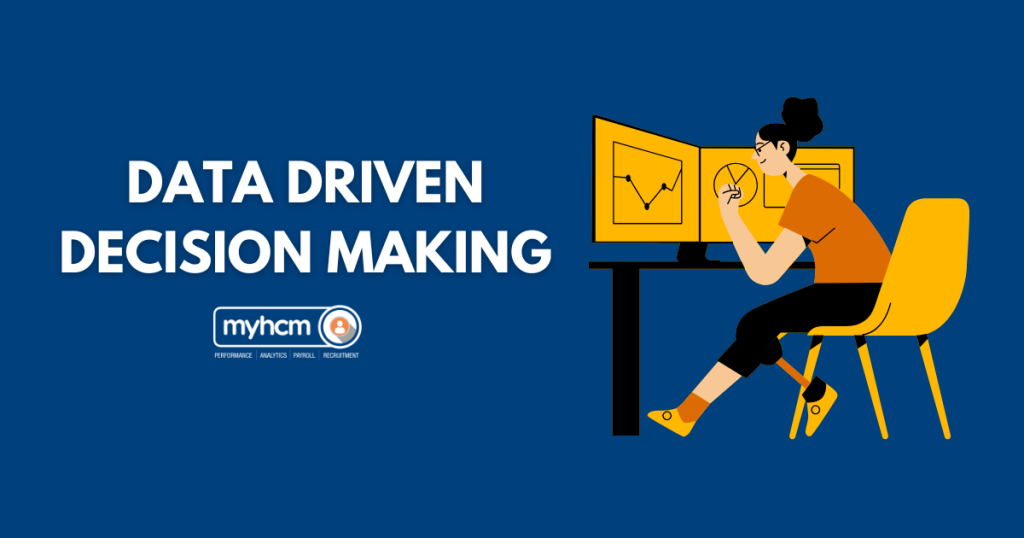Introduction
In today’s competitive business environment, relying solely on intuition for Human Capital Management (HCM) can, however, hinder progress and create inefficiencies. Therefore, embracing data-based decisions offers a robust approach to optimizing HR processes and achieving strategic objectives. Therefore, embracing data-based decisions offers a robust approach. This approach optimizes HR processes. It also helps achieve strategic objectives. For this reason, understanding data is crucial for organizations. Leveraging data is also crucial for them. These actions enhance their HR effectiveness. In fact, this article will explore the essence of data-driven decision making. It will also explore its vital importance for modern HR. Finally, it will explore how organizations can effectively implement it. Ultimately, fostering a data-driven decision-making culture will lead to more informed and impactful HR strategies.
The Core of Data-Driven Decision Making in HCM
At its core, data-driven decision making in HCM involves utilizing factual data, relevant metrics, and insightful analytics to inform all strategic HR choices. This methodology ensures that decisions are directly aligned with overarching organizational goals and initiatives. When businesses effectively harness their HR data, every stakeholder, from HR professionals to department leaders, is empowered to make better, more informed decisions on a daily basis. However, simply possessing data is insufficient. Truly effective decision making necessitates cultivating a culture that values critical thinking and data exploration throughout the organization.
Why Data-Driven Decision Making Matters for Modern HR
The sheer volume and complexity of data available today present both opportunities and challenges for organizations. Consequently, many companies struggle to translate their data aspirations into tangible results. The significance of data-driven decision making lies in its ability to transform raw information into actionable insights. This enables organizations to gain a deeper understanding of employee performance, identify talent gaps, predict potential turnover, and optimize recruitment strategies. Embracing this decision making process facilitates proactive problem-solving and the identification of growth opportunities within the workforce.
Implementing Data-Driven Decision Making in Your Organization
Transitioning to a data-driven decision-making framework requires a deliberate and systematic approach. Organizations need to establish the necessary tools and processes to facilitate this transformation. This involves consolidating HR data from various sources, performing thorough analysis, and generating meaningful reports. Furthermore, leveraging advanced analytics capabilities can offer predictive insights, enabling the proactive identification of trends and potential challenges. By providing accessible data and intuitive analytics, organizations can empower their HR teams to move beyond reactive measures and adopt a truly great decision making approach.
Benefits of Data-Driven Decision Making in Your Organization
Organizations that successfully integrate data-driven decision making within their HR functions experience a wide range of benefits. Enhanced employee engagement and satisfaction are significant outcomes, as data insights can inform personalized development plans and highlight areas for improvement in the overall employee experience. Moreover, strategic planning becomes more effective when grounded in concrete data regarding workforce capabilities and future needs. Ultimately, this decision making process leads to more efficient resource allocation, reduced operational costs, and a more agile and responsive HR function.
Best Practices for Fostering Data-Driven Decision Making
To fully embed data-driven decision making into your HR processes, several key best practices should be followed. Firstly, clearly define your objectives and the critical HR metrics that align with those goals. What are you trying to achieve? Reduce turnover? Improve time-to-hire? Boost employee satisfaction? Secondly, ensure you have robust systems in place to identify, prepare, and collect relevant and high-quality data. Data integrity is paramount for generating reliable insights. Thirdly, organize and explore this data to uncover meaningful patterns and valuable insights. Utilizing effective reporting and analytics tools can significantly streamline this process. Consider using data visualization techniques to make complex information more accessible. Finally, translate data analysis into actionable conclusions and implement and evaluate the impact of data-driven decisions on your key HR outcomes. Regularly review your data and the effectiveness of your strategies to ensure continuous improvement.
Conclusion
In conclusion, decision making has evolved from a desirable attribute to a fundamental necessity for organizations aiming to optimize their HCM strategies and achieve sustainable growth. By embracing a culture of data-driven decision making, businesses can unlock valuable insights, make more confident and strategic choices, and ultimately cultivate a more engaged, productive, and successful workforce. This commitment to leveraging data will not only enhance HR effectiveness but also contribute significantly to the overall success and resilience of the organization in today’s dynamic business landscape.
